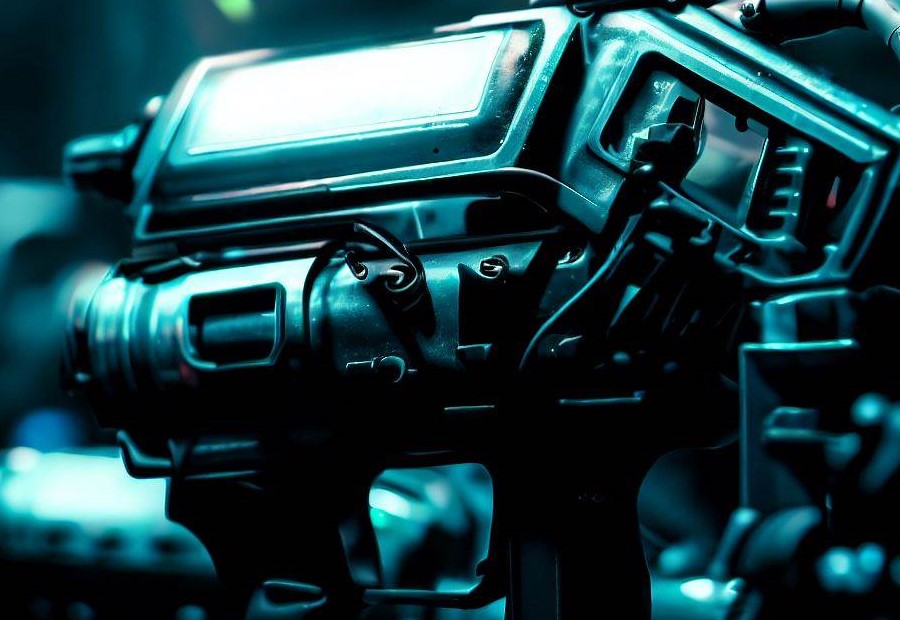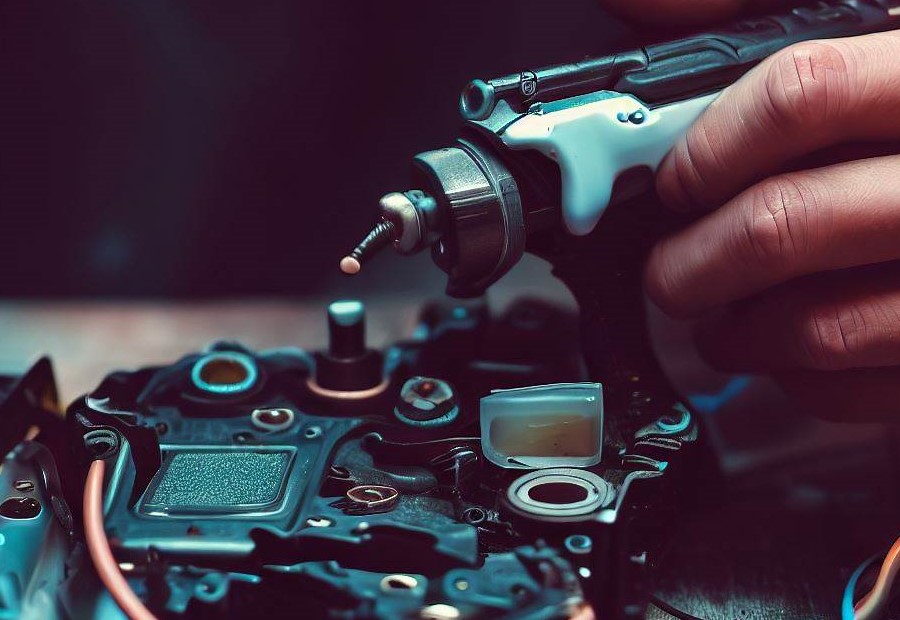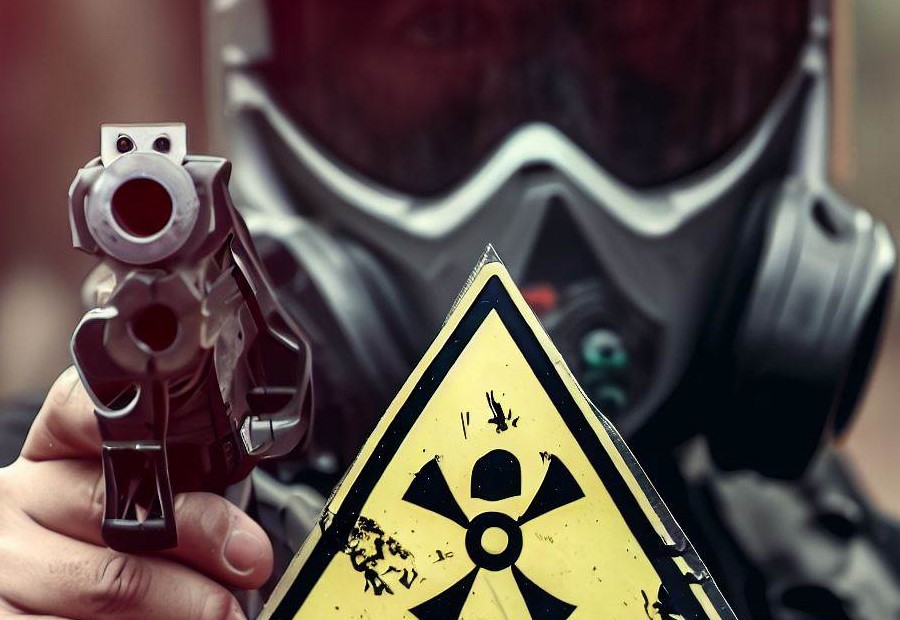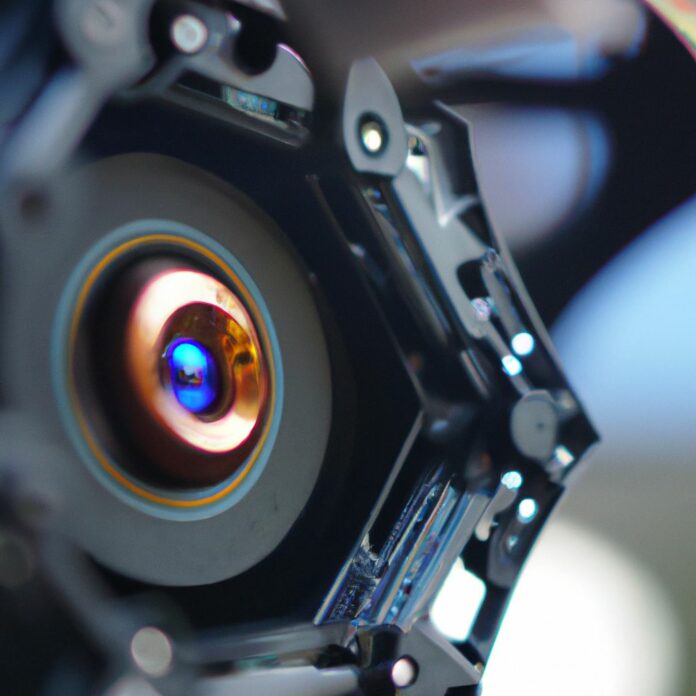Electronic paintball guns have revolutionized the sport by offering enhanced performance and functionality. These guns utilize electronic components to provide precise firing mechanisms and various shooting modes. Understanding how electronic paintball guns work is essential for both beginners and experienced players. Here is a breakdown of the key components and mechanisms involved in the operation of electronic paintball guns.
Introduction to Electronic Paintball Guns

Electronic paintball guns, also known as electro-pneumatic markers, use electronic circuitry to control the firing process. Unlike mechanical paintball guns, which rely on manual operation, electronic guns offer faster firing rates, improved accuracy, and advanced features.
Components of an Electronic Paintball Gun
- Circuit Board: The heart of an electronic paintball gun, the circuit board, regulates the firing mechanism and controls various shooting modes.
- Battery: To power the circuit board and other electronic components, an electronic paintball gun requires a rechargeable battery.
- Solenoid: The solenoid is an electromagnetic valve that controls the release of air pressure to propel the paintball forward.
- Hopper: The hopper holds the paintballs and feeds them into the gun for firing.
How Does an Electronic Paintball Gun Work?
The operation of an electronic paintball gun involves the following steps:
- Trigger Activation: When the trigger is pulled, it activates a switch that sends a signal to the circuit board.
- Circuit Board Signal: The circuit board interprets the trigger signal and instructs the solenoid to release a burst of compressed air.
- Battery Power: The battery provides the necessary electrical power to the circuit board and other electronic components.
- Solenoid Mechanism: Upon receiving the signal from the circuit board, the solenoid opens a valve, allowing compressed air to propel the paintball out of the barrel.
Modes of Operation in Electronic Paintball Guns
Electronic paintball guns offer different shooting modes, including:
- Semi-Automatic Mode: Each trigger pulls fires a single paintball.
- Burst Mode: Multiple shots are fired with a single trigger pull, typically in bursts of three or four shots.
- Full-Automatic Mode: Holding down the trigger results in continuous firing until the trigger is released, or the hopper runs out of paintballs.
Maintenance and Upkeep of Electronic Paintball Guns
To keep your electronic paintball gun in optimal condition, regular maintenance is crucial. This includes cleaning and lubrication, battery replacement, and troubleshooting common issues that may arise.
Safety Tips for Using Electronic Paintball Guns
When using electronic paintball guns, it is important to prioritize safety. Some key safety tips include wearing proper protective gear, using barrel blocking devices when not in use, and handling and shooting the gun responsibly to avoid accidents.
Understanding the inner workings of electronic paintball guns and following safety guidelines will ensure an enjoyable and safe experience on the paintball field.
Components of an Electronic Paintball Gun
As we delve into the world of electronic paintball guns, we come across a crucial aspect: the components that bring these guns to life. In this section, we’ll explore the inner workings of an electronic paintball gun and the key elements that make it function seamlessly.
From the intricate circuit board to the power source in the form of a battery, and the essential solenoid and hopper, we’ll uncover the fascinating pieces that come together to create the ultimate paintball experience. Get ready for an inside look at the heart of electronic paintball guns!
Circuit Board
Below is a table illustrating the components of a circuit board in an electronic paintball gun:
| Component | Description |
| Circuit Board | The main control unit of an electronic paintball gun. It houses the microprocessor and other electronic components that regulate the gun’s firing mechanism. |
| Battery | A power source that provides the necessary energy for the circuit board to function. It can be rechargeable or non-rechargeable. |
| Solenoid | An electromechanical device controlled by the circuit board. It converts electrical energy into mechanical force to release the air pressure from the gun’s air tank and propel the paintball. |
| Hopper | A container that holds the paintballs and connects to the circuit board. It ensures a steady supply of paintballs for firing. |
In a similar vein, a true story exemplifying the importance of the circuit board in an electronic paintball gun happened during a competitive paintball tournament. A skilled player was dominating the match, consistently hitting opponents with pinpoint accuracy.
However, midway through the game, their paintball gun suddenly malfunctioned, rendering it useless. Upon investigation, it was discovered that a faulty circuit board was to blame. The player, who had neglected regular maintenance on their gun, learned a valuable lesson about the significance of keeping the circuit board in top condition.
From that point forward, they made it a priority to clean, inspect, and replace the circuit board when necessary. This experience highlighted how a well-functioning circuit board is crucial for optimal performance in the fast-paced and competitive world of paintball.
Battery
When it comes to electronic paintball guns, the battery is an essential component that powers the gun and allows it to function properly. Here are some important points to consider about the battery:
- The battery provides the necessary electrical power to operate the circuit board and other electronic components of the paintball gun.
- It is typically a rechargeable lithium-ion battery, which offers a reliable and long-lasting power source.
- The battery capacity, measured in milliampere-hours (mAh), determines how long the gun can be used before needing a recharge. Higher mAh values indicate a longer runtime.
- Regular maintenance of the battery is important to ensure optimal performance. This may include periodic recharging and avoiding deep discharges.
- In most cases, the battery can be conveniently recharged using a compatible charger that is provided with the gun or purchased separately.
To ensure proper functioning of your electronic paintball gun, it is recommended to:
- Always carry a fully charged spare battery, especially during longer gameplay sessions.
- Regularly check the battery’s charge level to avoid running out of power during a game.
- Store the battery in a cool, dry place when not in use to maintain its longevity.
By considering these factors and following best practices for battery usage, you can enjoy uninterrupted gameplay with your electronic paintball gun.
Solenoid
The solenoid in an electronic paintball gun plays a crucial role in its operation. It converts electrical energy into mechanical motion, controlling the firing operation of the gun.
When the trigger is pulled, an electrical signal from the circuit board activates the solenoid. Acting as a valve, the solenoid allows air or gas from the gas system to flow into the firing chamber, creating a burst of compressed air.
This burst of air propels the paintball forward, determining the firing rate of the gun. Different solenoid configurations and settings can allow for different modes of operation, such as semi-automatic, burst, or full-automatic modes.
The solenoid mechanism is responsible for regulating the firing rate and overall performance of the electronic paintball gun. It is an integral component that ensures smooth and efficient shooting. Understanding the role of the solenoid helps in proper maintenance, troubleshooting, and maximizing the performance of the paintball gun.
Hopper
Here is a table that provides information about the hopper component of an electronic paintball gun:
| Name | Description |
|---|---|
| Hopper | The hopper is a container that holds and feeds paintballs into the gun. It is usually located on top of the gun and has a motorized mechanism or gravity feed to ensure a steady supply of paintballs to the firing chamber. |
When choosing a hopper for your electronic paintball gun, consider the following:
- Capacity: Hoppers come in different sizes, typically ranging from 100 to 300 paintballs. Choose a hopper that can hold an appropriate number of paintballs for your style of play and preferences.
- Feeding Mechanism: Decide whether you prefer a motorized hopper that uses a battery to feed the paintballs or a gravity-fed hopper that relies on the natural movement of the balls. Motorized hoppers provide faster feeding rates, while gravity-fed hoppers may be more reliable and require fewer batteries.
- Speed: Consider the feeding speed of the hopper, which determines how quickly it can supply paintballs to the firing chamber. Look for hoppers with high feed rates to ensure smooth and consistent shooting.
- Compatibility: Ensure that the hopper is compatible with your specific electronic paintball gun model. Different guns have different interfaces for attaching the hopper, so make sure they are compatible before making a purchase.
Considering these factors will help you select the best hopper for your electronic paintball gun, enhancing your overall experience on the field.
How Does an Electronic Paintball Gun Work?

If you’ve ever wondered how an electronic paintball gun works, you’re in the right place!
In this section, we’ll take a deep dive into the inner workings of these high-tech markers.
From trigger activation to circuit board signals, battery power to the solenoid mechanism, we’ll unravel the fascinating mechanisms that make electronic paintball guns pack a serious punch on the field.
Get ready to explore the science and technology behind these modern-day paintball warriors!
Trigger Activation
The process of trigger activation in an electronic paintball gun involves several steps:
- When the player pulls the trigger, it initiates the firing sequence.
- The trigger mechanisms within the gun detect the trigger pull and send a signal to the circuit board.
- The circuit board then processes the signal and activates the necessary mechanisms for firing.
- A small burst of electrical current is sent from the battery to the solenoid.
- The solenoid receives the electrical current and quickly moves, allowing air or gas to be released from the paintball gun’s firing chamber.
- This rapid air release propels the paintball forward with enough force to reach the intended target.
- The gun continues to fire paintballs as long as the trigger remains pulled or until it is switched to a different firing mode.
Trigger activation is a crucial aspect of using an electronic paintball gun effectively. It allows players to have full control over when and how frequently they fire, enhancing their strategic gameplay.
The concept of trigger activation in paintball guns has evolved over time. Early paintball guns had mechanical triggers that relied on mechanical mechanisms to initiate firing.
With advancements in technology, electronic paintball guns were introduced, offering more precise trigger activation and customizable firing modes. This innovation revolutionized the sport of paintball, providing players with improved accuracy and faster firing rates.
Circuit Board Signal
Here is a table outlining the important aspects of the circuit board signal in an electronic paintball gun:
| Aspect | Description |
| Circuit Board Signal | The circuit board signal is responsible for transmitting information from the trigger activation to the other components of the paintball gun. |
| Activation | When the trigger is pulled, it sends an electrical signal to the circuit board, indicating the user’s intention to fire the paintball gun. |
| Processing | The circuit board processes the signal and interprets it, determining the timing and intensity of the paintball gun’s firing mechanism. |
| Coordination | Once the circuit board has processed the signal, it coordinates with other components such as the solenoid and battery to activate the firing mechanism and propel the paintball. |
When considering the circuit board signal in an electronic paintball gun, it is important to ensure that it is functioning properly. Any issues with the signal transmission or processing can result in a malfunctioning paintball gun and affect its performance. Regular maintenance and cleaning of the circuit board can help prevent signal-related problems.
When using an electronic paintball gun, always prioritize safety and adhere to proper handling and shooting techniques. Additionally, wearing proper protective gear and using barrel blocking devices can minimize the risk of accidents. By following these guidelines, paintball enthusiasts can have an enjoyable and safe experience.
Battery Power
When it comes to battery power in electronic paintball guns, there are a few important considerations to keep in mind:
- The type of battery: Electronic paintball guns typically use rechargeable batteries, such as lithium-ion or nickel-metal hydride. These batteries provide consistent power and can be recharged after use.
- Battery life: The battery life of an electronic paintball gun can vary depending on factors such as the mode of operation and the frequency of use. On average, a fully charged battery can last for several games before needing to be recharged.
- Battery voltage: Different electronic paintball guns require different battery voltages to function optimally. It’s essential to check the manufacturer’s specifications to ensure that the battery has the correct voltage.
- Monitoring battery level: Many electronic paintball guns have built-in battery level indicators or alarms to alert players when the battery is running low. It’s crucial to pay attention to these indicators to avoid sudden power loss during gameplay.
A true story that demonstrates the importance of battery power involves a competitive paintball player who forgot to recharge their battery before a tournament.
In the middle of a crucial game, their electronic paintball gun suddenly stopped working due to low battery power. As a result, they lost valuable points and ultimately the match. This incident serves as a reminder to always check and recharge the battery before heading into gameplay to ensure uninterrupted performance.
Solenoid Mechanism
The solenoid mechanism, also known as the core component, plays a vital role in the operation of electronic paintball guns. It is responsible for controlling the release of compressed air or CO2, which propels the paintball out of the barrel.
This mechanism consists of a plunger, a metal rod wrapped with a coil of wire. When an electrical signal is transmitted from the circuit board, it energizes the coil, creating a magnetic field that attracts the plunger.
As the plunger moves, it opens a valve, allowing the compressed air or CO2 to enter the firing chamber. This sudden influx of gas builds up pressure behind the paintball, propelling it out of the barrel at a high velocity. Once the electrical signal ceases, the magnetic field dissipates, and the plunger returns to its original position, closing the valve and stopping the airflow.
The solenoid mechanism operates with exceptional speed and precision, enabling rapid-fire capabilities in both semi-automatic and full-automatic modes. Its reliable performance is crucial for consistent firing accuracy.
To ensure optimal function, regular maintenance and lubrication of the solenoid mechanism are essential. Removing any debris or paint residue and applying suitable lubricant will promote smooth operation and prolong the mechanism’s lifespan.
Modes of Operation in Electronic Paintball Guns

Photo Credits: Paintballbuzz.Com by Matthew Roberts
Discover the exciting world of modes of operation in electronic paintball guns! From the rapid-fire action of semi-automatic mode to the adrenaline-pumping bursts of the burst mode, and the full-throttle intensity of the full-automatic mode, we’ll delve into each of these modes and explore the unique experiences they offer on the paintball field. Get ready to immerse yourself in the heart-pounding world of electronic paintball gun gameplay!
Semi-Automatic Mode
The Semi-Automatic Mode in electronic paintball guns allows for one shot to be fired with each pull of the trigger.
| Function: | Semi-Automatic Mode enables the user to fire a single paintball with each trigger pull. |
| Activation: | When the trigger is pulled, it activates the circuit board signal to initiate the firing process. |
| Ammo Feeding: | The hopper supplies the paintballs to the marker for each shot in Semi-Automatic Mode. |
| Mechanism: | The solenoid mechanism is responsible for releasing compressed air or gas to propel the paintball out of the barrel. |
| Rate of Fire: | In Semi-Automatic Mode, the rate of fire depends on the speed of the trigger pulls by the user. |
| Limitations: | In some competitions or fields, there may be restrictions on the rate of fire in Semi-Automatic Mode for safety and fairness reasons. |
Burst Mode
Burst mode is a popular feature in electronic paintball guns that allows players to quickly shoot a set number of paintballs with each pull of the trigger. Here are some key points to consider about burst mode:
- Burst mode activation: To activate burst mode, the player must usually perform a specific sequence of trigger pulls or button presses on the paintball gun.
- Number of shots: Burst mode typically allows players to shoot a specific number of paintballs per trigger pull, usually ranging from 2 to 5 shots.
- Firing rate: In burst mode, the paintball gun fires the set number of shots rapidly in quick succession, providing a burst of firepower.
- Tactical advantage: Burst mode can be useful in situations where players need to quickly eliminate opponents or provide suppressive fire without using up too many paintballs.
- Limitations: Some paintball fields or events may have restrictions on burst mode, limiting its use or requiring specific safety measures.
To make the most out of burst mode in electronic paintball guns, players should practice their trigger control and timing to ensure accurate shots. It’s important to understand and follow any rules or regulations set by the paintball field or event organizers regarding burst mode usage.
Full-Automatic Mode
- The full-automatic mode is a firing mode in electronic paintball guns where the gun automatically continues firing as long as the trigger is held down.
- In this mode, the circuit board sends signals to the solenoid, which in turn controls the firing mechanism.
- The battery provides the power needed to activate the circuit board and the solenoid in the full-automatic mode.
- When the trigger is held down, the circuit board continuously sends signals to the solenoid, causing it to rapidly cycle and release bursts of pressurized air or paintballs.
- The solenoid mechanism is responsible for directing the flow of air or paintballs from the hopper to the barrel during the firing process.
In the full-automatic mode, players have a higher rate of fire compared to other modes, allowing for rapid and continuous firing.
It is important to note that the use of the full-automatic mode may be restricted during gameplay depending on the rules and regulations of the specific paintball facility or event.
Always ensure to follow safety guidelines and use proper protective gear when using the full-automatic mode or any other mode of operation in electronic paintball guns.
Maintenance and Upkeep of Electronic Paintball Guns

Maintaining and keeping your electronic paintball gun in top shape is crucial for a seamless shooting experience.
In this section, we’ll dive into the essential aspects of maintenance and upkeep to ensure optimal performance.
From cleaning and lubrication techniques to battery replacement tips and troubleshooting common issues, we’ve got you covered.
Get ready to learn the tricks to extend the longevity of your electronic paintball gun and keep it firing on all cylinders.
Cleaning and Lubrication
Proper cleaning and lubrication are crucial for maintaining the performance and longevity of an electronic paintball gun. Follow these steps to ensure your gun stays in top shape:
- Clean and wipe down the exterior: Use a damp cloth to thoroughly remove any dirt or debris from the gun.
- Disassemble the gun: Take apart all the different components of the gun, including the barrel, hopper, and trigger frame.
- Clean the barrel: Eliminate any paint residue or debris from the barrel using a squeegee or barrel swab.
- Clean the internals: Gently clean the circuit board, solenoid, and other internal components using a soft brush and cleaning solution. Be cautious not to damage any delicate parts.
- Inspect O-rings: Thoroughly examine all O-rings for signs of wear or damage. Replace any worn-out O-rings to guarantee proper sealing.
- Lubricate: Apply a small amount of paintball gun oil or lubricant to the O-rings and other moving parts. This will minimize friction and ensure smooth operation.
- Reassemble the gun: Carefully put all the components back together, ensuring everything is properly aligned and tightened.
- Test: Before using the gun on the field, test its functionality to ensure everything is working correctly.
Pro-tip: Regular cleaning and lubrication will not only prevent malfunctions, but also extend the lifespan of your electronic paintball gun. Make it a habit to clean and oil your gun after every use, and it will perform at its best when you need it the most.
Battery Replacement
When it comes to battery replacement in electronic paintball guns, there are a few important considerations to keep in mind:
- Regular maintenance: It is crucial to regularly check the battery level of your electronic paintball gun to ensure optimal performance. Aim to replace the battery before it completely runs out of power.
- Battery type: Different electronic paintball guns may require specific types of batteries. It is essential to consult the user manual or contact the manufacturer to determine the correct battery type for your gun.
- Battery life: The battery life of electronic paintball guns can vary based on usage and quality. Some batteries may last for a few games, while others can provide power for multiple events. It is advisable to have spare batteries on hand to avoid interruptions during gameplay.
- Proper replacement procedure: Follow the manufacturer’s instructions carefully when replacing the battery. Ensure that the gun is turned off and safely disconnect the old battery before inserting the new one. Take note of any polarity or specific insertion requirements mentioned in the manual.
- Dispose of old batteries responsibly: Batteries used in electronic paintball guns may contain hazardous materials, so it is important to dispose of them properly. Check with local recycling centers or battery recycling programs to ensure the safe disposal of used batteries.
By considering these factors and following the appropriate procedures, you can ensure reliable performance and avoid any disruptions caused by battery replacement issues in your electronic paintball gun.
Troubleshooting Common Issues
To troubleshoot a paintball gun not firing, check if there is paint in the hopper and if the air tank is filled to the appropriate pressure.
If you are experiencing inconsistent velocity, ensure that the air tank is properly attached and the O-rings on the bolt and valve are lubricated.
If you notice any air leakage, carefully inspect all the seals and O-rings for damage or wear and replace them if necessary.
In case of jamming or paint chopping, it is essential to clean the barrel and the breach area to remove any debris or broken paintballs.
When the trigger is sticking, it is recommended to disassemble the trigger mechanism and clean or lubricate any moving parts that may be causing the sticking.
Remember, regular maintenance and troubleshooting are crucial for prolonging the lifespan of your electronic paintball gun and ensuring optimal performance during gameplay.
Safety Tips for Using Electronic Paintball Guns

Whether you’re a seasoned paintball player or just getting started, it’s crucial to prioritize safety when using electronic paintball guns.
In this section, we’ll dive into essential safety tips to ensure a secure and enjoyable paintball experience.
From the importance of proper protective gear to the role of barrel blocking devices and responsible handling and shooting techniques, we’ll cover all the key aspects you need to know to stay safe on the field.
So gear up, stay alert, and let’s explore these vital safety measures!
Proper Protective Gear
When participating in paintball, it is crucial to wear proper protective gear to ensure safety and prevent injuries. Here are some essential pieces of protective gear:
- Mask: A paintball mask is the most important piece of protective gear. It shields your face and eyes from direct hits, preventing serious injuries.
- Chest Protector: A chest protector offers additional protection for your torso, reducing the impact of incoming paintballs and minimizing bruising.
- Gloves: Wearing gloves protects your hands from direct hits and helps improve grip on the paintball gun. Look for gloves with padded palms for added comfort and protection.
- Knee and Elbow Pads: Knee and elbow pads provide cushioning and protect your joints during dives and slides, reducing the risk of scrapes and injuries.
- Neck Protector: A neck protector is a padded collar that shields your neck from paintball impacts, protecting a sensitive area.
- Appropriate Clothing: Wear long-sleeved shirts, pants, and comfortable footwear. Avoid loose-fitting clothes that can get caught on equipment.
Proper protective gear is vital to ensure a safe and enjoyable paintball experience. It minimizes the risk of injuries and allows you to focus on the game without worrying about your safety.
Barrel Blocking Devices
Barrel blocking devices play a crucial role in ensuring the safety of electronic paintball guns. They are specifically designed to prevent unintentional firings and to protect everyone on the field. Here are some key facts about barrel blocking devices:
- Barrel blocking devices are typically crafted from durable materials like rubber or plastic.
- These devices are precisely designed to securely fit over the paintball gun’s barrel, completely obstructing the opening.
- When properly positioned, a barrel blocking device guarantees that no paintballs can be discharged from the gun.
- It is important to always utilize barrel blocking devices when the paintball gun is not in use or when players are off the field.
- Convenience during gameplay is ensured as these devices are easy to attach and detach.
- Regular inspection of barrel blocking devices is necessary to ensure their proper functioning and good condition.
- It is vital to select a barrel blocking device that is compatible with the specific model of the paintball gun being used.
- Using a barrel blocking device demonstrates responsible and safe handling of the paintball gun.
In the early days of paintball, the widespread use of barrel blocking devices was not common. This resulted in numerous accidents and injuries caused by unintentional discharges.
As the sport progressed and safety became a top priority, the introduction of barrel blocking devices became a standard practice. Nowadays, barrel blocking devices are mandatory in the majority of paintball fields and tournaments, ensuring the safety of both players and spectators.
Responsible Handling and Shooting
When it comes to responsible handling and shooting of electronic paintball guns, there are a few key factors to consider.
First and foremost, always prioritize responsible handling and shooting practices when using the gun, even if you know it’s not loaded. This means consistently keeping the safety on, refraining from pointing the gun at anyone unless you have the intention to shoot, and refraining from removing the barrel blocking device until you are prepared to play.
Secondly, it is crucial to use proper protective gear for safe handling and shooting. This includes wearing a mask to protect your eyes, face, and ears, as well as utilizing gloves and padding to shield your body from potential impacts.
Lastly, responsible shooting involves being aware of your surroundings and the individuals nearby. Ensure that you have a clear target and a designated shooting area that is safe. Refrain from shooting at individuals who are not participating in the game, and always remain cognizant of your shooting range and the potential for accidents.
By adhering to these guidelines and adopting responsible handling and shooting practices, you can guarantee a safe and enjoyable experience with your electronic paintball gun.
Always remember, safety should be the utmost priority in any recreational activity.
Frequently Asked Questions
How does an electronic paintball gun work?
An electronic paintball gun operates using a battery-powered electronic circuit board. When the trigger is pulled, a microswitch sends a signal to the circuit board, which activates a solenoid valve.
The solenoid valve opens and allows compressed air or CO2 to flow through the air line and into the bolt assembly. The bolt assembly then moves forward, propelling the paintball from the feed neck into the barrel. Finally, the solenoid valve closes, sealing the air chamber and preparing the gun for the next shot.
What is a spool valve in an electronic paintball gun?
A spool valve is a type of valve mechanism commonly used in electronic paintball guns. It consists of a cylindrical tube, called the spool, that moves back and forth within the valve body.
When the trigger is pulled, the circuit board activates the solenoids, which move the spool forward, allowing air to flow into the bolt assembly. The spool then moves back, sealing the air chamber and preparing for the next shot. Spool valve systems are known for their efficiency and smooth operation.
What are programmable fire modes in electronic paintball guns?
Electronic paintball guns feature programmable fire modes that allow players to adjust the rate of fire to suit various styles of play. Common fire modes include semi-auto (one shot per trigger pull), burst (a set number of shots per trigger pull), and full-auto (continuous firing as long as the trigger is held). Some guns also have ramping modes, where the rate of fire increases as the trigger is pulled faster. These fire modes can be customized and adjusted using the gun’s circuit board.
How does the ball loading sequence work in an electronic paintball gun?
In an electronic paintball gun, the ball loading sequence begins with the detection system, which determines if a paintball is fully loaded into the breach. Once the detection system confirms the presence of a paintball, the circuit board activates the solenoids to move the bolt forward, pushing the paintball into the barrel. After firing, the bolt retracts, and the loader quickly replaces the fired ball with another one. The gun is then ready for the next shot.
What makes electronic paintball guns different from mechanical guns?
There are several key differences between electronic and mechanical paintball guns. Electronic guns operate using a battery-powered circuit board, while mechanical guns rely on manual mechanisms, such as springs or pneumatics, to advance the ball and release the gas.
Electronic guns can fire at higher rates and offer programmable fire modes, while mechanical guns have slower rates of fire and require more skill. Additionally, electronic guns are generally more expensive and require a higher air pressure source (HPA) instead of CO2 used by some mechanical guns.
What are some popular electronic paintball guns?
Some popular electronic paintball guns include the Planet Eclipse Etek 4, the Planet Eclipse Etha 2, and the Empire Battle Tested BT-4. These guns are known for their advanced features, high firing rates, and reliability. They are widely used by both experienced players and new players looking to upgrade their paintball gear.

